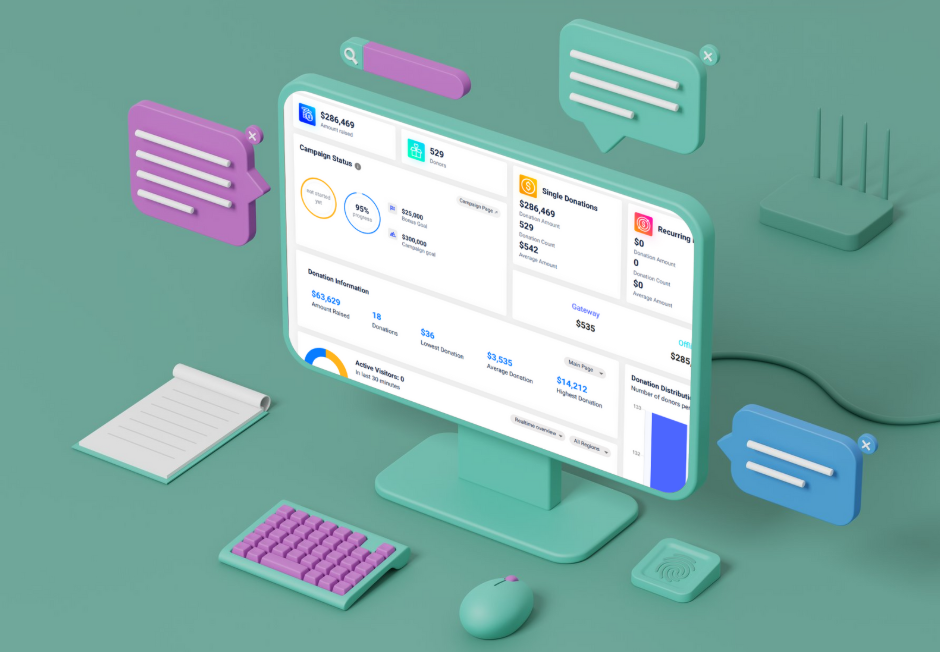
When someone lands on your nonprofit’s fundraising page, you have precious seconds to capture their attention and inspire them to give. The difference between a donation and a missed opportunity often comes down to how well you’ve optimized your page. Let’s explore proven strategies to transform your fundraising page into a donation-generating powerhouse.
The Psychology of Online Giving
Understanding what motivates people to donate online is the foundation of effective fundraising page optimization. Donors want to feel connected to your cause and confident that their contribution will make a real difference.
The most successful fundraising pages tap into emotional storytelling while building trust through transparency. When visitors see specific examples of how their donation will be used – like “$50 provides clean water for one family for a month” – they can visualize their impact. This specificity transforms abstract giving into tangible help.
Social proof also plays a crucial role in online giving psychology. When potential donors see that others have already contributed, it creates a sense of community and validates their decision to give. People are naturally inclined to follow the actions of their peers, especially when supporting a worthy cause.
Key Page Elements That Drive Donations
Your fundraising page should guide visitors naturally toward making a donation. Start with a compelling headline that clearly communicates your mission and creates urgency. Instead of generic phrases like “Help Us Help Others,” try something specific: “Help Us Provide Emergency Shelter for 200 Families This Winter.”
The donation form itself deserves special attention. Offer multiple giving amounts with strategic defaults – research shows that suggesting higher amounts (while still providing smaller options) increases average donation size. Make recurring donations easy to select, as monthly givers often contribute more over time than one-time donors.
Visual elements matter tremendously. High-quality photos and videos that show your work in action create emotional connections that text alone cannot achieve. Include progress bars or thermometers that show how close you are to reaching your goal – this creates momentum and encourages people to help you cross the finish line.
Trust indicators like security badges, testimonials, and clear information about how donations are used remove barriers to giving. Be transparent about administrative costs and show exactly where the money goes.
Mobile-Friendly Design Tips
With over 60% of online donations now happening on mobile devices, your fundraising page must work flawlessly on smartphones and tablets. A page that’s difficult to navigate on mobile is essentially turning away more than half of your potential donors.
Keep your mobile design clean and uncluttered. Large, easy-to-tap buttons are essential – make your “Donate Now” button prominent and accessible. Simplify your donation form for mobile users by minimizing the number of fields they need to complete. Consider using mobile payment options like Apple Pay or Google Pay to streamline the process.
Load times are critical on mobile devices. Optimize images and minimize plugins that could slow down your page. Every second of delay can cost you donations, so test your page speed regularly and make improvements as needed.
Ensure that your donation amounts are easy to select on smaller screens. Radio buttons or large, clearly labeled options work better than dropdown menus on mobile devices.
Testing and Improving Performance
The most effective fundraising pages are continuously refined based on real data and donor behavior. A/B testing allows you to compare different versions of your page to see which elements drive more donations.
Start by testing one element at a time – your headline, donation amounts, button colors, or form placement. Run tests long enough to gather statistically significant data, typically at least two weeks or 100 conversions per variation.
Monitor key metrics beyond just total donations. Track conversion rates, average donation amounts, and bounce rates. These insights help you understand not just how much you’re raising, but how effectively your page is engaging visitors.
Pay attention to user feedback and behavior analytics. Heat mapping tools can show you where visitors click and scroll, revealing potential problems with your page layout. If you notice people frequently abandoning your donation form at a specific step, that’s a clear signal for improvement.
Regular updates keep your page fresh and relevant. Update your progress toward goals, share recent success stories, and rotate photos to reflect current activities. Donors want to support active, thriving organizations.
FAQs
How do I optimize my fundraising page?
Some quick wins to optimize your fundraising page include clear headlines with the donor’s potential impact clearly stated, an easy to find donate button, smart presets, and social proof.
Your Next Steps
Optimizing your nonprofit fundraising page is an ongoing process, not a one-time task. Start by implementing the most impactful changes first – improving your mobile experience, clarifying your impact messaging, and streamlining your donation process.
Remember that small improvements can lead to significant increases in donations over time. A 10% improvement in your conversion rate might seem modest, but it compounds to thousands of additional dollars raised throughout the year.
The investment you make in optimizing your fundraising page will pay dividends in increased donations and stronger donor relationships. Your cause deserves every advantage in connecting with supporters who want to make a difference – give them the smooth, inspiring experience that turns intention into action.
Book a free strategy call to map out your next successful campaign.
Supporting Materials
E-Book: The Greatest Donor Aquisition Tool You’ll Ever See: International Peer-to-Peer Fundraising
Webinar replay: “The Secrets of Peer-To-Peer Fundraising”
Fundraising Guide: Peer-to-Peer Fundraising
Blog article: Strengthen P2P Relationships
Feature tour: Donor Rescue Explained
